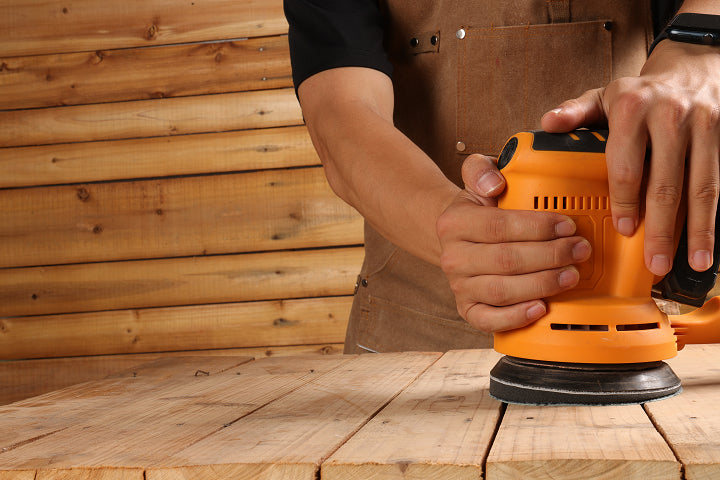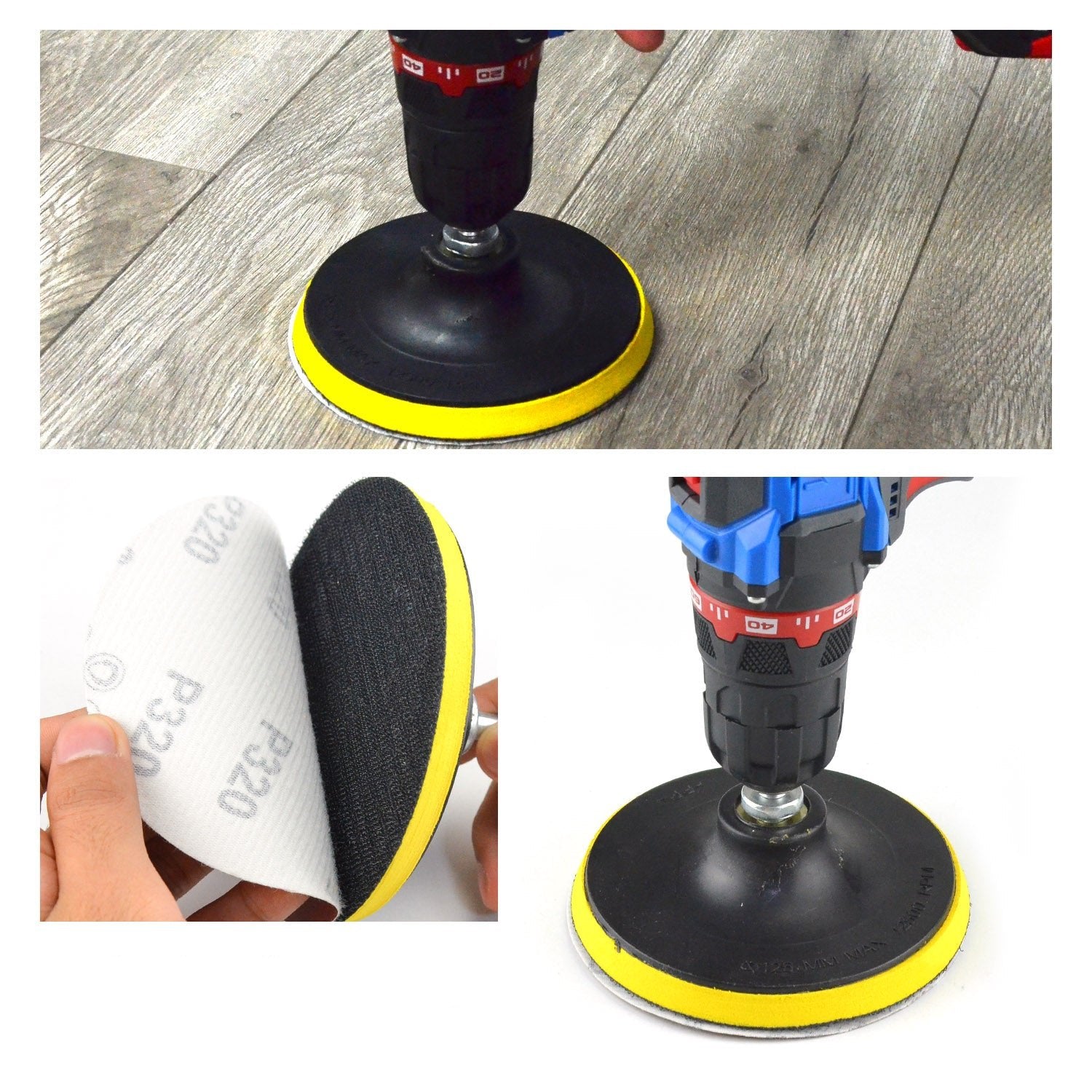Sanding Discs Needed in the Automotive Industry

Sanding discs are an essential tool in the automotive industry, playing a critical role in everything from vehicle repairs and restorations to final paint finishes. Whether you're preparing a car for painting, smoothing out imperfections, or removing rust, selecting the right type of sanding disc can make all the difference in achieving a professional-quality result.
In this guide, we will explore the various types of sanding discs, the tools used for sanding, and offer tips on how to choose the right grit for different automotive applications. By the end of this article, you’ll have the knowledge to confidently select and use sanding discs for your automotive projects.
When Are Sanding Discs Used?
In automotive work, sanding discs are used at several crucial stages to achieve smooth, durable, and paint-ready surfaces. Here’s when and why sanding discs are essential:
- Bodywork Repairs: When repairing dents, scratches, or rough areas, sanding discs help smooth out imperfections. Coarse sanding discs (such as P40-P80) are perfect for heavy-duty tasks like stripping old paint, rust removal, or smoothing out body filler.
- Paint Preparation: Before applying primer or paint, sanding discs are used to prep the surface. Proper sanding ensures better adhesion of the paint or primer, resulting in a smoother and more durable finish. Medium-grit sanding discs (P100–P220) are typically used for this stage.
- Polishing and Finishing: After painting, fine-grit sanding discs (P1000–P2000) are used to remove minor imperfections, smooth the surface, and achieve a glossy, flawless finish.
- Rust Removal: For metal surfaces, sanding discs with coarser grits (P40-P80) are often employed to quickly remove rust and prepare the metal for treatment, priming, or painting.
Tips for Sanding with Sanding Discs

When using sanding discs, proper technique is crucial to getting the best results. Here are some essential tips to help you achieve smooth and even results, especially if you're new to the process:
- Choose the Right Grit: Start with coarse sanding discs for heavy-duty tasks like paint removal or rust stripping. As you move through the process, switch to finer grits for smoothing and finishing.
- Use Even Pressure: Apply consistent pressure when using sanding discs to avoid uneven sanding or gouging the surface. Uneven pressure can create dips or imperfections.
- Keep the Surface Clean: As you sand, dust and debris can accumulate on the surface. It’s important to clean between stages to ensure that you're not transferring old dust onto your freshly sanded surface.
- Proper Tool Usage: Consider using tools like orbital sanders or angle grinders for larger or tougher surfaces. These power tools can make sanding more efficient and precise.
Different Sanding Tools for Sanding Discs
There are several tools available that work with sanding discs, and each has a specific application in automotive work. Choosing the right tool for the task will improve both efficiency and quality.
- Orbital Sanders: These are versatile tools used for smooth and uniform sanding on flat surfaces. They work well with hook and loop sanding discs, making it easy to attach and replace discs without hassle.
- Angle Grinders: For heavy-duty sanding tasks, such as removing rust, old paint, or smoothing rough surfaces, angle grinder sanding discs are ideal. These tools can handle resin fibre sanding discs, which are designed for aggressive sanding.
- Die Grinders: When working in tight spaces or performing detail sanding, die grinders paired with quick change sanding discs are perfect for precision work.
- Stationary Disc Sanders: These machines are ideal for fine sanding and polishing. They offer a steady surface and can accommodate various sanding discs for different purposes.
- Festool Sanders: Known for their precision, Festool tools are excellent for professional-quality finishes. These tools are compatible with high-quality sanding discs, providing excellent results in bodywork and finishing tasks.
Choosing the Right Sanding Disc for Different Applications

Not all sanding discs are created equal, and each type is designed for specific tasks. Here’s a breakdown of which sanding discs are best suited for various automotive applications:
- Flap Discs: These are perfect for heavy-duty tasks like rust removal or smoothing rough metal surfaces. Flap discs are effective on angle grinders and provide a smooth finish without damaging the underlying material.
- Hook and Loop Discs: Easy to attach and remove, these sanding discs are ideal for projects that require frequent grit changes. They are commonly used with orbital sanders for polishing, smoothing, and finishing.
- Quick Change Discs: Designed for fast disc swaps, these sanding discs are ideal for use with die grinders or other tools that require frequent grit changes.
- PSA Discs (Pressure Sensitive Adhesive): PSA discs adhere directly to the sanding tool, making them great for applications where efficiency is important and disc changes need to be minimized.
- Resin Fibre Discs: Used with angle grinders, these are perfect for aggressive sanding tasks such as stripping paint or grinding down metal. They are highly durable and withstand heavy usage.
- Diamond Polishing Discs: For the final finishing and polishing, diamond polishing discs are used to smooth out the paint surface and achieve a high-gloss finish. These are often used for automotive detailing.
- Sanding Sheets: Ideal for hand sanding, sanding sheets are used for small touch-ups or when you need precise control over the sanding process.
How to Choose Sanding Disc Grit
The grit of your sanding discs determines how aggressively you’ll be able to sand a surface. Grit size is critical when selecting the right disc for a given task. Here’s how to determine which grit to use:
- Coarse Grit (P40–P80): These discs are used for heavy sanding tasks, such as removing paint, rust, or smoothing rough metal. Coarse grits are perfect for aggressive material removal.
- Medium Grit (P100–P220): These sanding discs are typically used for surface preparation, including sanding between coats of primer and smoothing bodywork repairs.
- Fine Grit (P400–P600): These are ideal for refining the surface and preparing it for paint. They can also be used between coats of paint or primer.
- Ultra-Fine Grit (P1000–P2000): For polishing and achieving a glossy finish, ultra-fine sanding discs are used. These are typically applied after painting and are essential for getting a smooth, high-quality finish.
Important Sanding Disc Usage Tips

To maximize the effectiveness of your sanding discs, keep these important tips in mind:
- Don’t Over-Sand: Over-sanding can damage the surface, especially with fine finishes or delicate paint layers. Always monitor your progress and stop once the surface is sufficiently smooth.
- Check the Disc’s Condition: Sanding discs wear out over time. When they become worn or clogged, replace them to ensure continued efficiency.
- Proper Speed: Different tasks require different speeds. For coarse sanding, use a higher speed, and for finer finishes, use a slower speed to ensure control and smoothness.
- Clean Between Stages: Regularly clean the surface you are sanding and the sanding discs to avoid transferring dust or debris, which can affect the final result.
The Lifespan of Sanding Discs
The lifespan of your sanding discs will depend on the type of material being sanded, the grit of the disc, and how often it is used. Coarse sanding discs typically wear out faster when used for aggressive tasks, while finer discs last longer when used for polishing or light sanding. It's important to regularly inspect the discs for wear and replace them as needed to maintain optimal performance.
Choosing the right sanding discs for your automotive projects is essential for achieving a smooth, professional-quality finish. Whether you're tackling bodywork repairs, prepping for paint, or polishing the final coat, using the right tool and technique can make a world of difference.
With over 10 years of experience as a sanding discs wholesaler, our company offers a wide variety of high-quality sanding discs for all your automotive needs. From coarse discs for heavy-duty tasks to ultra-fine polishing discs, we have everything you need to get the job done right. Contact us today for more information and to explore our selection.
Continue Reading

Palm Sander vs. Orbital Sander: Which One Fits Your Sanding Needs

